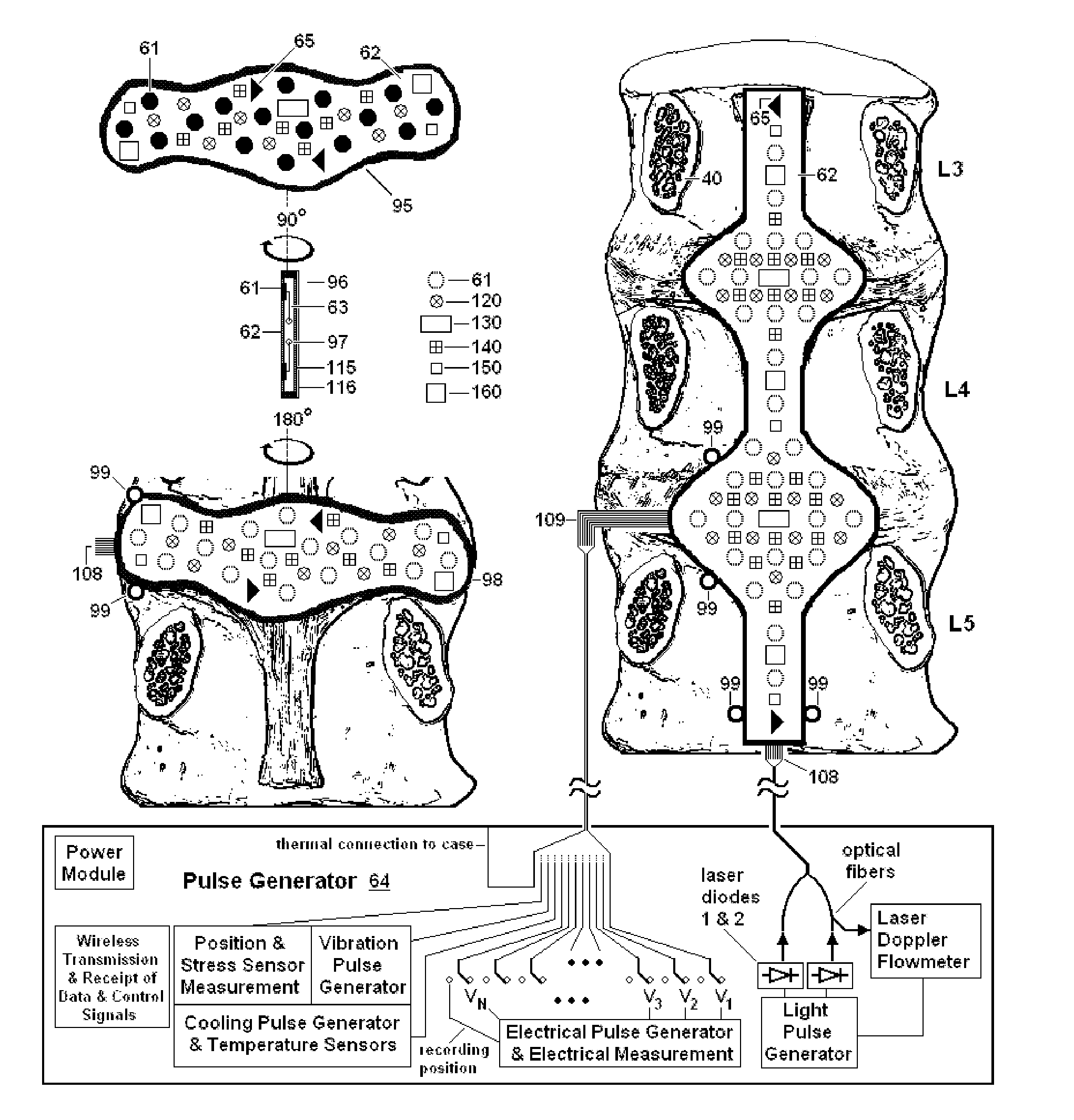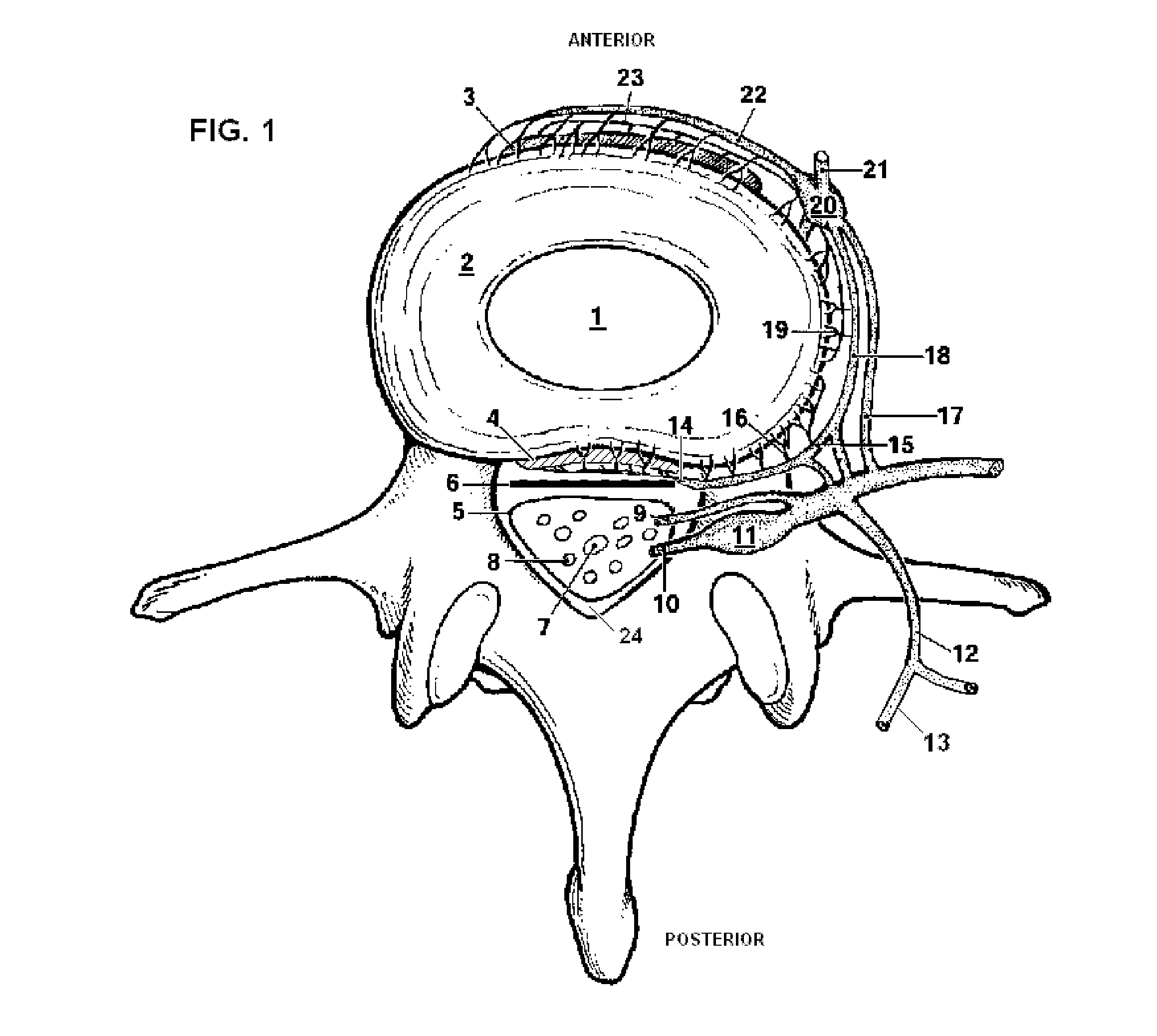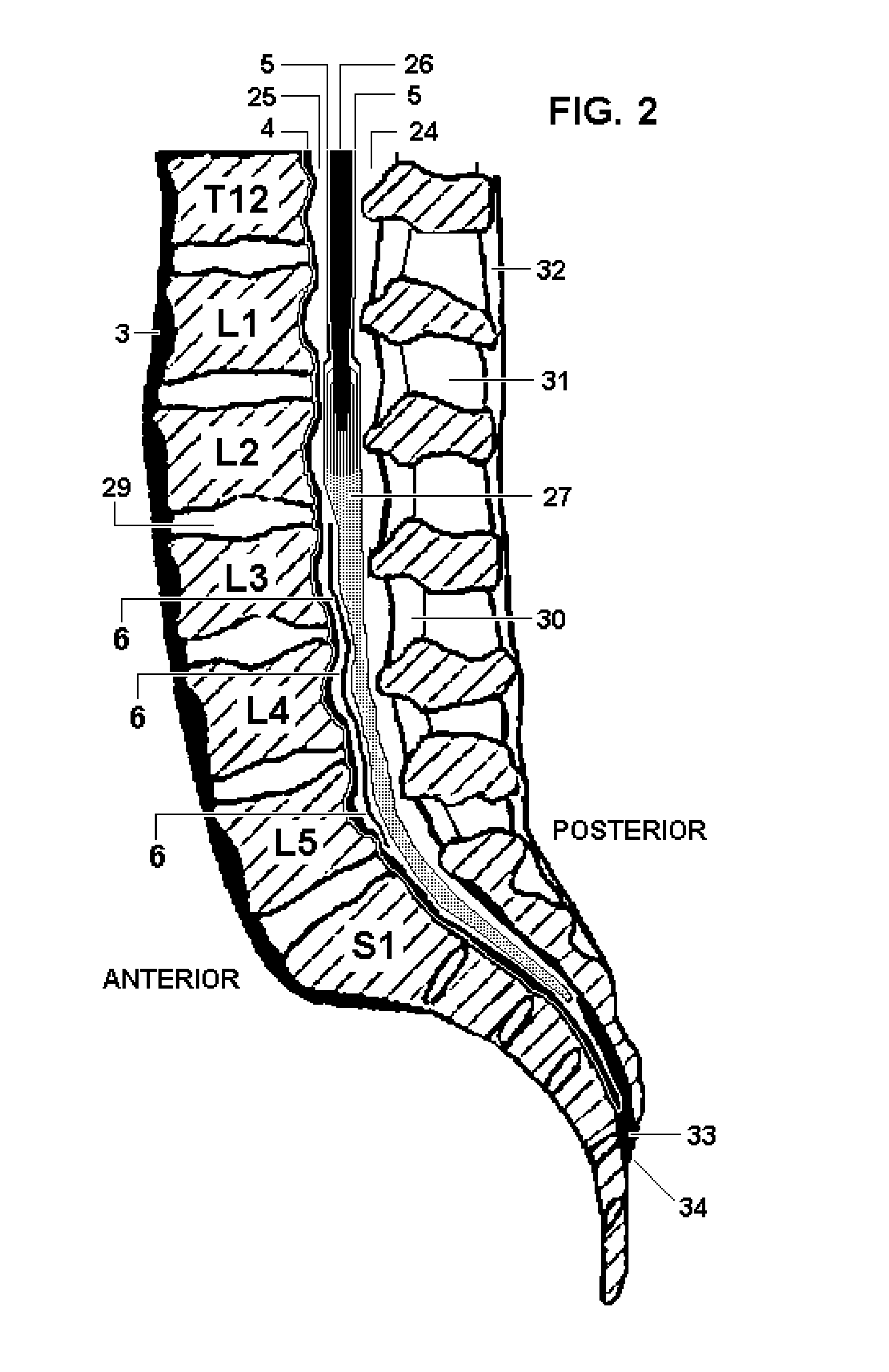System and Methods for Diagnosis and Treatment of Discogenic Lower Back Pain
a lower back pain and discogenic technology, applied in the field of energy impulse delivery, can solve the problems of disc rupture or bulging outward, sprain, strain, or spasm in one or more muscles or ligaments in the back, and the posterior longitudinal ligament may be injured, so as to prevent the rotation and migration of the leads and reduce back pain
- Summary
- Abstract
- Description
- Claims
- Application Information
AI Technical Summary
Benefits of technology
Problems solved by technology
Method used
Image
Examples
Embodiment Construction
[0065]FIG. 5 shows an array of electrodes and a pulse generator that may be used to stimulate nerves in the posterior longitudinal ligament and underlying annulus fibrosus, according to the present invention. An array of electrodes is also known as a lead. In FIG. 5A, the lead 60 is shown to be a percutaneous flat lead. The width of the lead may be, for example, 0.5 cm. As shown, it contains eight contact electrodes 61, which are embedded in insulating material 62. For example, the contact electrodes may be made of an alloy of platinum / iridium, and the insulation material may be made of a flexible, inert silicone elastomer (such as Silastic™), polyurethane or silicone / polyurethane. When the lead is rotated by 90 degrees and sectioned along its axis, wires 63 are seen to connect each contact to corresponding connection points in the Pulse Generator 64. The wires 63 may also be embedded in the insulating material 62. For example, the wires may be made of the conducting material 35NLT-...
PUM
 Login to View More
Login to View More Abstract
Description
Claims
Application Information
 Login to View More
Login to View More - R&D
- Intellectual Property
- Life Sciences
- Materials
- Tech Scout
- Unparalleled Data Quality
- Higher Quality Content
- 60% Fewer Hallucinations
Browse by: Latest US Patents, China's latest patents, Technical Efficacy Thesaurus, Application Domain, Technology Topic, Popular Technical Reports.
© 2025 PatSnap. All rights reserved.Legal|Privacy policy|Modern Slavery Act Transparency Statement|Sitemap|About US| Contact US: help@patsnap.com



